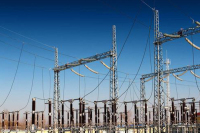The operation quality, safety and reliability of power supply system in power engineering are not only related to the quality of wires and cables, but also related to the construction quality of cable accessories and lines. This paper will introduce the common situation of cable laying in power engineering.
1. Cable laying mode
The cable laying methods are as follows: directly buried laying, pipe laying, shallow trough laying, cable trench laying, cable tunnel laying and overhead laying.
There are advantages and disadvantages in several ways. Generally, the urban development planning, the density of existing buildings, the length of cable lines, the number of cables laid and the influence of the surrounding environment should be considered. From the technical comparison, the cable tunnel and cable trench laying methods of Guizhou power engineering are convenient for the construction, maintenance and repair of cables. In some developed countries, public tunnels have been considered in urban planning and construction. Practice has proved that the operation effect of public tunnel is good, greatly reducing the number of repeated investment and the phenomenon of repeated excavation of pavement. However, the initial investment of the project is huge, and the building materials consume money. In China, due to various factors, this kind of laying method is very few.
In contrast, direct buried laying and shallow trench laying are economical laying methods. Direct buried cable is an economical and widely used laying method. It is used in the suburbs and places where vehicles do not pass frequently, but it is not conducive to the maintenance and overhaul of the cable. Once the cable fault is encountered, even if the fault point is detected by the tester, it is extremely inconvenient to re open the cable trench. Therefore, the selection of cable laying mode should be combined with the actual situation, according to the engineering conditions, environmental characteristics, cable type and quantity and other factors, in accordance with the requirements of operation reliability, easy maintenance and the principle of technical and economic rationality.
2. Cable selection
The commonly used power cables include oil immersed cable, PVC insulated cable, cross-linked polyethylene cable, etc. according to the different use occasions, they are extended to different types of special cables. At present, with the continuous improvement of production technology and production process in Guizhou electric power engineering, cross-linked polyethylene cable has become a widely used cable product. In cable selection, it should be selected according to the different environment and conditions of use, combined with the specific situation, so as to minimize the crossing of various pipe side railway, highway and communication cables. If direct buried and shallow trough laying methods are adopted, it should be considered to make the cable more flexible Use cable with steel armor.
3. Selection of cable section area
The selection of cable cross-sectional area is related to the amount of investment, line loss and voltage quality, cable service life, etc. If the cross-sectional area is too small, the voltage quality will decline, the line loss will be too large, and the initial investment will be too high. Therefore, according to the load forecasting results, we should plan and select the appropriate cross-sectional area to make the power cable meet the requirements of cable core temperature and voltage drop under the working current and thermal stability under the short-circuit current. Due to the high difficulty and low accuracy of load forecasting work. Therefore, the selection of cable cross-sectional area should also meet the requirements of technical guidelines for urban medium and low voltage distribution network transformation and urban power network planning guidelines.
When selecting power cables for three-phase four wire low-voltage power grid, the selection of zero line cross-sectional area should also be considered. In public low-voltage network, due to the greater influence of user factors, three-phase load balance is difficult to control. In order to improve voltage quality and reduce line loss, zero line cross-sectional area should be the same as phase line cross-sectional area.
4. Cable network and automation
With the continuous promotion and use of power cables in the distribution network, the distribution network can be divided into cable network and overhead network (including overhead and cable hybrid network). "Implementation and supplementary opinions on technical guidelines for urban medium and low voltage distribution network transformation" also puts forward specific requirements for cable distribution network automation. Therefore, when the cable network is used in the regional network of distribution network, new technology and equipment should be adopted according to the requirements of distribution automation. Automation pilot work should be considered if conditions permit, and sufficient room should be considered when the supporting equipment selection is not mature, so as to lay a foundation for the realization of automation scheme.
5. Matters needing attention in power cable construction
1. Eddy current problems caused by high current power cables
In the construction of power cables, there are steel supports, steel protective tubes, cable clamps and overhead laying. All steel (iron) closed loops around power cables may form eddy currents, especially in high current power cable systems. In the construction of power cable, measures must be taken to prevent the steel (iron) closed circuit around the cable and prevent the eddy current phenomenon caused by the cable.
2. Mechanical damage caused by power cable turning
Due to the large outer diameter of power cable, it is difficult to transport and lay, and the requirements of Guizhou Power Engineering Cable on turning radius are relatively strict. In the construction of power cable, if the turning angle is too large, Guizhou power engineering may cause mechanical damage to the conductor, and the mechanical damage is reduced by the insulation strength of the cable until the failure occurs. During the construction, a cable head fault was found. When the cable head was made, the length of the three cable heads was the same. Due to the limitation of terrain, the middle phase cable head was too long and became arch when it was connected with the equipment. The root of the cable head was damaged and discharged. After that, some measures were taken to shorten the connection length of the middle phase cable head in the connection of the equipment, so that the three-phase cable head is free from external force. The practice has proved that the operation effect is good. It can be seen that the torsion of the cable should be reduced as much as possible in the cable construction process, and the cable should be naturally bent when the cable is turned and reserved, so as to eliminate the internal mechanical damage.
3. Moisture proof of power cable
The operation experience shows that most of the faults of medium and low voltage power cables are caused by the faults of intermediate joints and terminal heads, while most of the faults of intermediate joints and terminal heads are caused by poor sealing and moisture intrusion. The medium and low voltage power cable network mostly adopts the dendritic power supply mode, and there are a large number of cable terminals. Therefore, it is one of the important measures to ensure the safe and reliable operation of the cable to plug the leakage and seal the cable terminals and intermediate joints.
4. Grounding problems of medium and low voltage power cables
In the public medium and low voltage power cable network, because the three-phase load is not equal. Therefore, if the cable with metal sheath is used, the grounding problem of metal sheath must be considered, and the normal induced voltage at any non grounding point of metal sheath shall not be greater than 100V. In medium and low voltage cable network, all cable joints shall be provided with grounding electrode (Network), and the metal sheath shall be reliably grounded.








